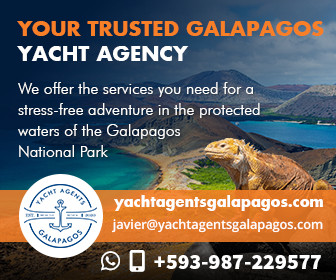Cruising The South Coast of Cuba
Published 15 years ago, updated 5 years ago
We have just spent 2 months cruising the south coast of Cuba and offer a few observations on the South Coast. We offer no comment on the North coast which we did not visit. We had been using the 1999 Nigel Calder cruising guide, but this needs updating.
Arrival
There is no need to radio-in on arrival in Cuban water and we were ignored every time we tried to radio ahead. Do proceed directly to a Port of Entry (Santiago, Cienfuegos or Cayo Largo on the south coast) do not anchor and check in later. Proceed to the marina dock and someone will be there to take your lines. If not, just tie up anyway but don’t leave the boat until the officials arrive – they will come.
On first entry into Cuba, you do get a lot of attention and we counted up to nine officials before we lost count, but they are all very polite and speak a little English and languages other than Spanish. The procedure will include a sniffer dog and a rummage/search. Offering a cold drink to an official is polite and all that is expected.
Permissions
Your tourist card/visa lasts for 30 days and should be renewed at an Immigration office if required, there is no need to obtain one in advance. Your cruising permit / temporary import licence from the Aduana / Customs will probably also be given for 30 days and must be renewed with 72 hours notice if you wish to extend. Those seem the two important ones, but you’ll end up with a big folder of paperwork. The Cubans love paperwork but do all the completion of forms themselves.
Moving Around
You will receive a despacho to the next port, but you are free to anchor in the islands before the next port with no particular time limits. Unfortunately, in Spring 2009, the only ports you are allowed to visit and get off the boat are Santiago, Cienfuegos and Cayo Largo. We tried to dock in Nueva Gerona which was on our despacho but were turned away – of course, the rules may change … The numerous islands to the south of Cuba offer many peaceful anchorages, many of which are well protected.
Pilotage Notes
The marinas are all easy to reach with buoyage as needed. The inside channel Canal del Pingue NE of the Jardines de la Reina is well marked and easy. The reef access channel between Cayo Rosario and Cayo Cantilles (W of Cayo Largo) is well marked but has a 3m bar at the S end – so scary in any swell, contrary to what the cruising guide says.
Marinas / Ports
Dockage is about US$25 a day including power and water for a 50 ft / 15m boat in Spring 2009.
Santiago de Cuba
Straight in front of you, as you enter the harbour, you can’t miss it. The W dock is the main visitor dock and has plenty of water – we had 15ft / 4.5m depth. The piles for the dock stick out a little more than the deck, so fender up carefully. There is some pollution for the nearby Cement Works, possibly leaving yellow marks on your gel coat and a catch in your throat, but the harbour water is clean and everyone is helpful. If the W dock is full, the E dock is fine too but has no power/water, or you could Med-moor to the low dock in the middle. The town is a short taxi ride away and is interesting though very run down.
Cienfuegos
The entrance is well buoyed and has easy, safe access inside the huge bay with little pollution and good, solid docks at the marina. An interesting town to visit; the horse carts are a must and you can use the (slow) internet at the nearby Hotel Jagua. On the downside, the Club Cienfuegos next door can be very noisy, very late.
Cayo Largo del Sur
Follow the new, deep and well-buoyed channel, leaving the well-wooded island to starboard – ie. take the long way around this island if you’re worried about depth. There are 2 docks of floating pontoons with short fingers. The NW dock is for local tourist boats and the SE dock for visiting yachts. The fingers are 7.7m long to the centre of the end cleat.
Cayo Largo is entirely a tourist island and not real Cuba, but a little provisioning can be managed in a couple of shops with helpful staff. Get around by hopping on one of the hotel tourist buses or taking a Cubataxi. The Very helpful marina PR man Pire is possibly the most helpful man in Cuba – find him.! Really great snorkelling/diving on the reef outside – much better than Tobago Cays.
Provisioning
Don’t come to Cuba for a free market and good retail facilities – bring food with you.
Tourist shops are higher priced (in convertible pesos CUCs) and comically poorly stocked (though absolutely everywhere stocks rum and cigars). Agromercados (fruit & veg markets) in towns are a better bet and you can get several bags of supplies for $4-5 dollars, paying in local pesos. Don’t expect to be able to source much fresh meat, if at all. Fish, lobster and prawns are informally available by barter from local fishing boats in the islands – remember that a monthly wage in Cuba is maybe US$30, so maybe trade a bottle of rum ($5) for 10 lobster tails. We were offered 2 large crates of lobster for a bottle of rum – but we had nowhere to store them so we only took 5 large lobsters.
In Summary
Very different and well worth a visit.
George & Michael
SY Blue Sky
Related to following destinations: Cienfuegos, Cuba, Santiago de Cuba




